- Home
- Mahyar Mohtadi
- RV SONNE 256
RV SONNE 256
SO256 (TACTEAC)
Temperature and Circulation History of the East Australian Current
Auckland (New Zealand) - Darwin (Australia)
17.04.2017 - 09.05.2017
The East Australian Current (EAC) is one of the two main western boundary currents of the Pacific that transports large amount of heat out of the Western Pacific Warm Pool into the subtropics and subpolar regions, thereby regulating the global climate. Regionally, the EAC plays a crucial role in maintaining the health and vitality of the Great Barrier Reef (GBR) ecosystem. The few existing reconstructions of past changes in transport and temperature of the EAC are contradictory resulting in a knowledge gap in long-term variability of the southwest Pacific currents, which in turn hampers a reliable projection of future tropical and subtropical climate development. A better understanding the future activity of the EAC has direct implications for assessing the impact of future global climate changes on the GBR and other coastal ecosystems along the east coast of Australia. We collected marine sediments at several sites along the EAC between 12° and 23°S in order to assess centennial to multi-millennial changes in sea surface temperature and circulation of the Coral Sea over the past 25,000 years and their effect on regional and global climate and also the evolution of the GBR.
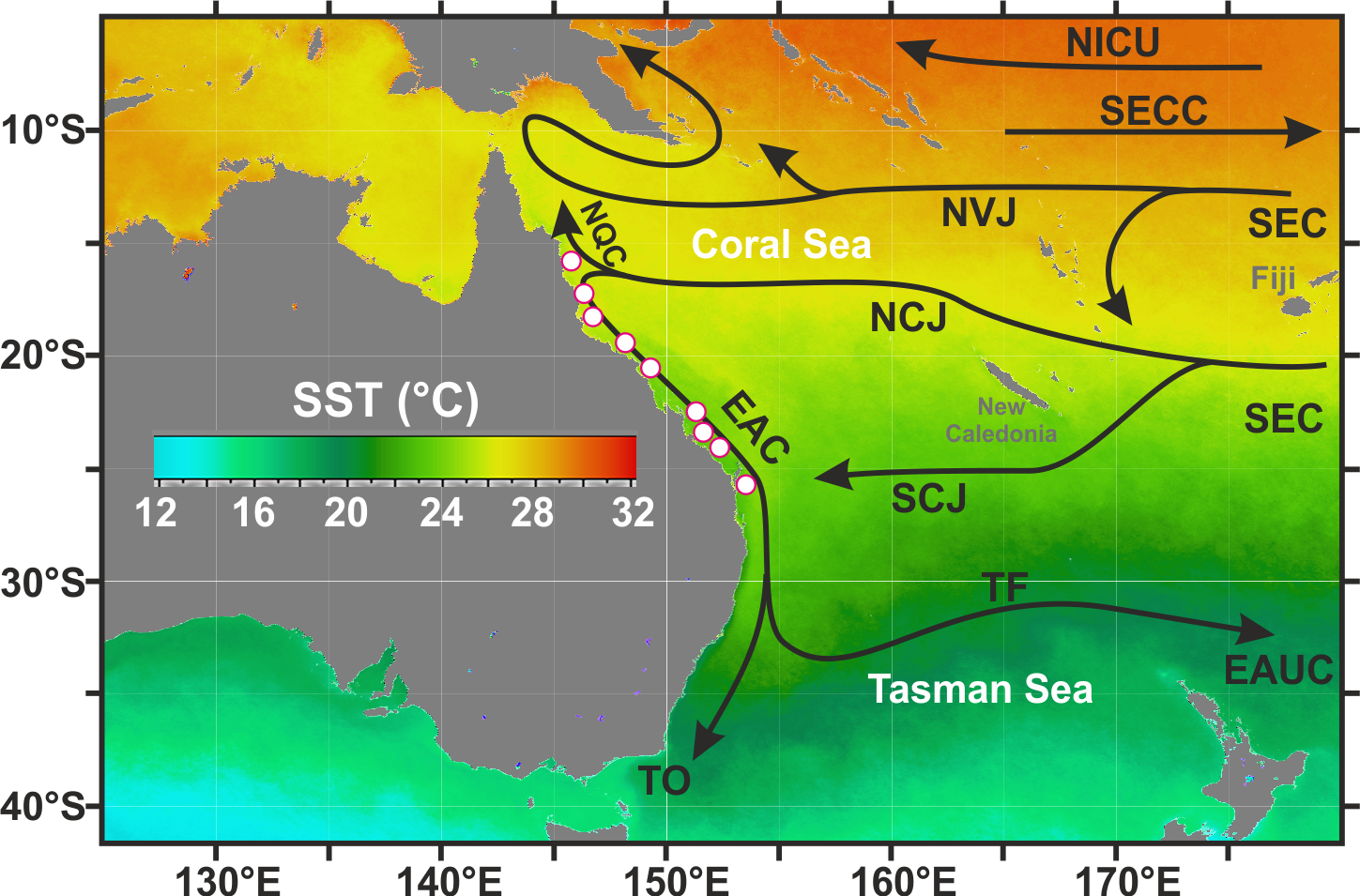
The R/V SONNE expedition SO-256 (TACTEAC) took place between April 17th and May 9th, 2017. The expedition started in Auckland, New Zealand and ended in Darwin, Australia. The first and the last 4.5 days of the expedition were spent for transit into, and out of, the study area in the Great Barrier Reef (GBR), respectively. The goal of this expedition was to collect water and sediment samples along the GBR in order to reconstruct the history of the East Australian Current (EAC) and its effect of the evolution of the GBR and the continental climate of eastern Australia. The 22 scientist attending this expedition made use of the ship equipment to collect swath bathymetry and sub-bottom profiling data, and water samples by a CTD-rosette water sampler. Sediment samples were collected using a gravity corer, a multiple corer, a chain bag dredge, and a giant box corer.
Samples were collected at 36 stations in 9 study areas off the Fraser Island (~26°S), One Tree Reef and Bunker (~23°S), Capricorn Channel (~22°S) and Swains/Marion Plateau (~21°S), Hydrographer’s Passage (~20°S), South Queensland Trough and Gloria Knolls (~17°S), Central Queensland Trough (~16°S), Ribbon Reefs (~15°S) and off Cape York (~12°S). During the 10 working days of the R/V SONNE expedition SO-256, 49 casts including 4 CTD-rosette water sampler casts, 5 chain bag dredge casts, 3 giant box corer casts, 14 multiple corer and 23 gravity corer casts were deployed. More than 100 m of sediment were recovered, described and sub-sampled on board, and about 8 hours of HD images from the seafloor were collected. Samples and data have been shipped to Germany, Australia, Canada, Japan, The Netherlands and China for further processing and will provide clues on the history and fate of the EAC and GBR in the coming months/years.
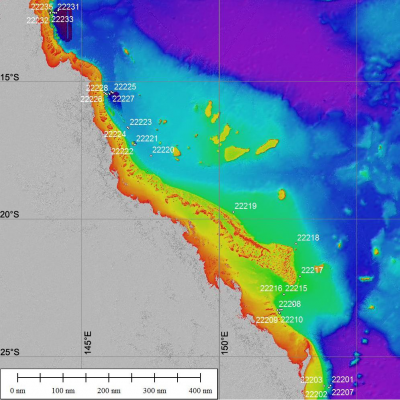
Chief scientist:
|
PD Dr. Mahyar Mohtadi |
|
|
Phone: |
|
|
Fax: |
+49 421 21865653 |


Images
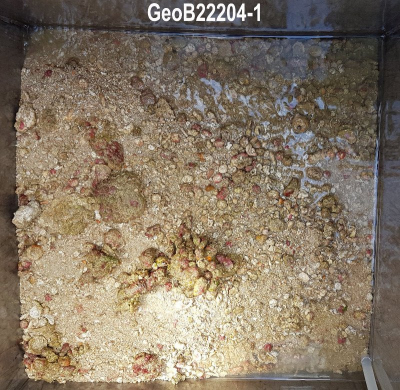
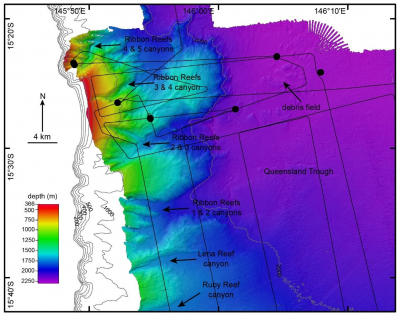
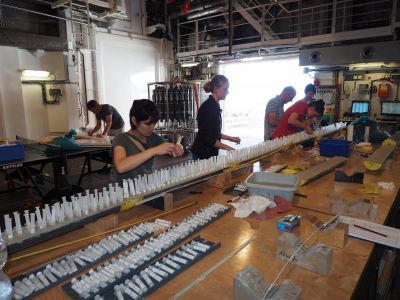
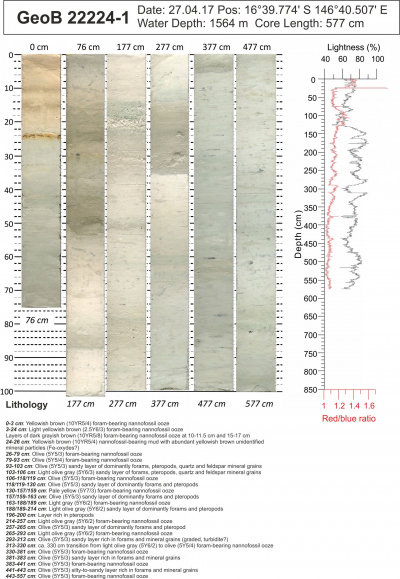
Publications
- Huang Z., Chen A., Mii H.-S., Mohtadi M., Steinke S., 2023. Calcification depth of pteropods in the Coral Sea using stable oxygen isotopes. Marine Micropaleontology, doi:10.1016/j.marmicro.2023.102322
- Wright R. M., Beaman R. J., Daniell J., Bridge T.C.L., Pall J., Webster J.M., 2023, Benthic communities of the lower mesophotic zone on One Tree shelf edge, southern Great Barrier Reef, Australia. Marine and Freshwater Research 74 (13), 1178-1192, doi:10.1071/MF23050.
- Zhai R., Mohtadi M., Dolman A.M., Yokoyama Y., Steinke S., 2022. Intensification of the East Australian Current after ~1400 CE. Geophysical Research Letters 49(24), doi:10.1029/2022GL100945
- Servettaz A., Yokoyama Y., Hirabayashi S., Kienast M., Miyairi Y., Mohtadi M., 2019. Dissolved inorganic radiocarbon content of the western Coral Sea: implications for intermediate and deep water circulation. Radiocarbon, doi:10.1017/RDC.2019.122.
- Gould J., Kienast M., Dowd M., Schefuß E., 2019. An open-ocean assessment of alkenone δD as paleo-salinity proxy. Geochimica et Cosmochimica Acta 246, 478-497, doi:10.1016/j.gca.2018.12.004.
- Mohtadi M. and cruise participants: R/V SONNE Cruise Report SO256, TACTEAC, Temperature And Circulation History of The East Australian Current, Auckland (New Zealand) – Darwin (Australia), 17 April – 09 May 2017. Berichte, MARUM – Zentrum für Marine Umweltwissenschaften, Fachbereich Geowissenschaften, Universität Bremen, No. 316, 81 pages. Bremen, 2017. ISSN 2195-9633.


